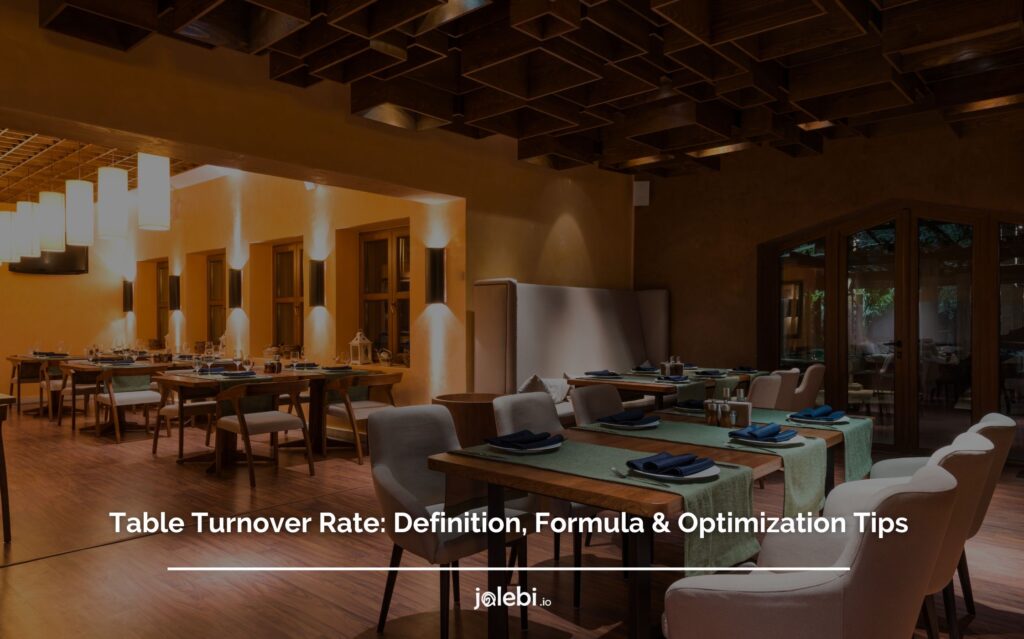Table of Contents

Starting a new business is a huge decision. There are so many things to consider, from the initial investment to the potential return on investment.
One way to make a quick decision about whether or not to start a new business is to do a cost benefit analysis.
This simply means looking at the costs of starting the business and weighing them against the potential benefits.
Ultimately, it’s up to you to decide whether or not starting a new business is worth it. But doing a cost benefit analysis is a quick and easy way to help you make that decision.
There’s no simple answer to the question of whether or not you should start a new business. It depends on a variety of factors, including your financial situation, your business acumen, and your goals for the future.
However, if you’re considering starting a new business, make sure you analyze the costs and benefits of your business.
In this blog post, we will share the best practices for cost benefit analysis that you can incorporate into your business plan! So let’s get started.
What Is Cost Benefit Analysis?
Cost benefit analysis is a technique used to compare the costs and benefits of different options to make an informed decision.
It can be used to assess a wide range of decisions, from investment projects to social policy choices.
In terms of increasing gross margin, CBA can be used to assess whether the benefits of increasing gross margin (e.g. higher profits) outweigh the costs (e.g. additional expenditure on marketing or product development).
Types Of CBA: Qualitative Cost Benefit Analysis And Quantitative Cost Benefit Analysis
Cost Benefit Analysis (CBA) is a systematic process used for estimating the strengths and weaknesses of alternatives that satisfy transactions, activities, or functional requirements.
The primary goal of CBA is to determine which option provides the best approach to achieve benefits while preserving savings.
There are generally two main types of CBA: qualitative cost benefit analysis and quantitative cost benefit analysis.
1. Qualitative Cost Benefit Analysis
Qualitative cost benefit analysis is more about understanding the underlying advantages and disadvantages of a decision, without attaching specific monetary values.
It’s particularly useful when the costs or benefits are difficult to quantify. This method is more subjective and relies heavily on descriptive analysis.
Advantages
- Qualitative cost benefit analysis helps in understanding non-monetary effects of a decision.
- Provides insights where quantification may be challenging or not possible.
- Useful in the early stages of assessment to identify potential costs or benefits.
Limitations
- Might be seen as too subjective or vague.
- Doesn’t provide a direct numeric comparison.
- May not be as influential in decision-making processes when stakeholders are looking for hard numbers.
2. Quantitative Cost Benefit Analysis
As the name suggests, this involves quantifying both the costs and benefits in monetary terms, which allows for a more objective comparison.
It’s easier to compare and rank different alternatives based on their net benefits (or cost savings) when numbers are involved.
Steps involved
- Identify all the costs and benefits.
- Assign monetary value to the costs and benefits.
- Determine the discount rate (if considering a period of time).
- Calculate the net present value (NPV) of costs and benefits.
- Carry out sensitivity analysis to see how changes in assumptions can impact the outcome.
Advantages
- Provides a clear and numeric comparison between different options.
- Makes decision-making more objective.
- Easier for stakeholders to understand and see the financial implications of decisions.
Limitations
- Quantifying some intangible benefits or costs can be challenging and might introduce inaccuracies.
- It assumes that all relevant costs and benefits can be identified and quantified, which is not always the case.
- Can sometimes be misleading if not all external factors are taken into account.
In reality, a comprehensive CBA might incorporate elements of both qualitative and quantitative analyses.
While quantitative data provides concrete figures for comparison, qualitative cost benefit analysis offers a more holistic understanding of potential outcomes.
The Role Of Costs Of Goods Sold In Cost Benefit Analysis
Cost of goods sold (COGS) plays a vital role in cost benefit analysis because it is used to determine the direct food and beverage costs associated with producing and selling a product or service in restaurants.
This information is important to make decisions about whether or not to produce and sell a particular product or service and facilitates effective waste management.
Examples of Indirect Costs In A Restaurant
Indirect costs are expenses that are not directly tied to a specific product or service but are necessary for the overall operation of a business. In the context of a restaurant, these can include a variety of overhead expenses.
Here are examples of indirect costs in a restaurant:
- Utilities
While you can directly measure the gas used to cook a specific meal, the lighting, air conditioning, and heating of the restaurant are indirect costs.
- Rent
The monthly rent for the physical space where the restaurant operates is a good example of indirect costs in a restaurant.
It’s not tied to a specific dish or service but is essential for the restaurant’s operation.
- Salaries of Management
The salaries of general managers, assistant managers, and other administrative staff are an example of indirect costs in a restaurant.
These roles do not directly prepare or serve food but are critical for the restaurant’s functioning.
- Depreciation
Wear and tear on kitchen equipment, furniture, and the building itself can be considered as examples of indirect costs in a restaurant. These costs are spread out over time and are not tied to a specific meal or service.
- Marketing and Advertising
Costs associated with promoting the restaurant, be it through print media, online ads, or radio spots, are indirect.
They don’t directly correlate to the production of a specific dish but help bring in customers.
Examples Of Direct Costs In A Restaurant
Direct costs in a restaurant are those that can be directly attributed to the production and sale of specific meals or services.
Now that you are familiar with the examples of indirect costs in a restaurant, here are some examples of direct costs to help you understand the cost-benefit analysis process in a better way.
- Raw Ingredients
The cost of meat, vegetables, spices, dairy, and other ingredients used to prepare dishes.
- Beverages
Costs associated with drinks, whether alcoholic like wine, beer, and spirits, or non-alcoholic like coffee, soda, and juice.
- Direct Labor
Salaries and wages of chefs, cooks, and other kitchen staff who are directly involved in preparing the food.
Similarly, the wages of servers who serve these dishes and drinks to customers are direct costs.
- Cooking Supplies
Disposable items used in the cooking process, such as cooking oil, butter, or any specialized item that gets used up quickly.
- Packaging for Takeout or Delivery
Containers, boxes, bags, disposable cutlery, and any other packaging material used for takeout or delivery services.
The Benefits Of Analyzing Cost And Benefits Of A Restaurant
The menu prices increased by 8.3% during 2022 which shows that cost accounting of a restaurant is essential to make it run smoothly.
Cost Benefit Analysis or CBA is a method that can be used to assess whether a proposed course of action is worth pursuing.
Here are some of the benefits of conducting a CBA for your restaurant business.
1- Understanding Costs And Benefits
The benefits of cost estimation include gaining a clear understanding of the potential costs and benefits associated with a proposed course of action.
This type of analysis can be used to make decisions about whether or not to proceed with a project, and can also help you understand the financial impact of a project.
2- Risk Identification
CBA is a systematic approach to estimating the risk associated with different options. It helps you to identify the option with the lowest risk by weighing the benefits and costs of each alternative.
It can also be used to estimate the financial and non-financial risks of a project. For example, CBA can be used to assess the environmental impacts of a project.
3- Better Decision-Making
It helps in taking a more insightful decision-making approach to your project. When conducting a cost benefit analysis, all of the potential costs and benefits associated with a proposed course of action must be considered.
It includes both direct and indirect costs and benefits.
Direct costs are those that can be easily quantified, such as the financial cost of materials or labor.
The indirect costs are those that are more difficult to quantify, such as the environmental impact or the social implications.
All of these costs help businesses to make an informed decision about whether or not to proceed with a proposed course of action.
Best Practices For Analyzing Costs And Benefits
With 60% of restaurants failing in the first year, it becomes extremely essential to consider the costs and benefits of your business before starting one.
In this section, we will share some of the best CBA practices that you can integrate into your strategy to decide whether starting a particular business venture is viable or not.
1- Consider All Relevant Stakeholders
When conducting a CBA, it is important to consider all of the stakeholders involved. This includes those who will be affected by the decision being made, as well as those who will be implementing it.
It will help to build trust and consensus amongst the stakeholders and make it more likely that the project will be successful.
2- Use Efficient Data Gathering Methods
Make sure you leverage both quantitative and qualitative data. This will ensure that you are able to make the most informed decision possible.
Quantitative data can give you a clear picture of the financial costs and benefits associated with a certain course of action.
Qualitative data, on the other hand, can provide insights into intangible factors such as employee morale or customer satisfaction.
3- Include Direct And Indirect Costs
Including both direct and indirect costs in a cost benefit analysis provides a more accurate picture of the true cost of a project or activity.
Direct costs are those that are incurred directly as a result of the project or activity being analyzed.
Indirect costs are those that are not incurred directly but are nonetheless associated with the project or activity. They can be difficult to quantify, but can often be significant.
4- Use Conservative Estimates
It is important to use conservative estimates whenever possible in CBA. This is because the benefits of a project or policy are often overestimated while the costs are underestimated.
It can lead to bad decisions being made that waste resources and cause harm.
Using conservative estimates helps to mitigate this problem by ensuring that the benefits are not overstated and that the costs are not underestimated. It leads to more accurate cost accounting and can help to prevent costly errors.
It is therefore crucial to use conservative estimates whenever possible to ensure that resources are used efficiently and effectively.
5- Conduct Sensitivity Analysis
Conducting a sensitivity analysis is an important step in any CBA to measure cost effectiveness.
There are several ways to conduct a sensitivity analysis.
- One common method is to vary one or more of the inputs to the model and see how this affects the output. It can help to identify which inputs have the biggest impact on the results of the analysis.
- Another approach is to fix all of the inputs at their base case values and then vary the discount rate.
This shows how sensitive the results are to changes in discount rates, and can help decision-makers to choose an appropriate rate.
Sensitivity analysis is an important tool for accurate cost estimation and can help to ensure that decisions are based on sound evidence.
Following these best practices will help ensure that your analysis is as accurate and helpful as possible.
How To Lower Costs And Increase Benefits Of A Restaurant
There are many ways to lower the costs and increase the benefits of a restaurant. One way is to opt for restaurant operations management software.
This type of software can help you manage your restaurant more efficiently and can also help you save money.
The software can help you keep track of your inventory and can also help you track your sales. This information can be very helpful in reducing waste and in making sure that you are making a profit.
- Better Customer Management
It can manage your customers better. You can use the software to track their orders and to make sure that they are happy with their experience at your restaurant.
- Cost Reporting
A restaurant operating software such as jalebi help with determining the true cost of food. The software can track your inventory, sales, and expenses, so you can see exactly how much each dish costs to make.
This information is critical for any restaurant owner or manager because it allows you to price your dishes accurately and make informed decisions about menu changes.
If you’re not using jalebi, you could be losing money on every sale! Contact us today for more details.
Overall, restaurant operations management software can be a great way to lower your costs and increase your benefits. It can help you run your business more efficiently and can also help you save money.
If you are looking for ways to run a successful business, this is definitely something worth considering.
Final Thoughts
Now that you’re familiar with the best practices of analysis of costs and benefits, integrate them into your restaurant business plan to see if it will be worth it in the long run.
Of course, there are always risks associated with any new business venture. However, if you carefully consider all of the potential risks and rewards before making your final decision, then you will be in a much better position to succeed.
Frequently Asked Questions
1. What is the weakness of analyzing costs and benefits for a restaurant?
One weakness of analyzing costs and benefits is that it can be difficult to quantify some of the benefits.
For example, if a project is expected to increase employee morale, it can be hard to put a number on that. This can make the results of the analysis less reliable.
2. What are two important criticisms of the analysis of costs and benefits?
There are two primary criticisms of the analysis of costs and benefits.
- The first is that it often fails to take into account all of the relevant factors. It can lead to decision-makers making suboptimal choices based on incomplete information.
- The second criticism is that even when all relevant factors are considered, the analysis can be subjective and open to interpretation.
It can lead to different individuals or groups coming to different conclusions about what the optimal course of action is.
Read more: What Does MP Mean in Restaurant Industry?











